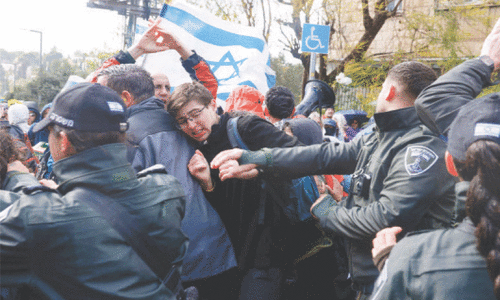About 10 kilometres from Taxila Museum on the left bank of Haro River, a unique historical place is located. It is known as ‘Jinnan Wali Dheri’, which literally means ‘The Mound of Demons’.
 |
| A view of the Buddhist monastery with rooms for monks and a central courtyard. |
This archaeological site is a Buddhist monastery with a stupa that existed between 2nd and 5th century AD.
 |
| The main stupa at Jinnan Wali Dheri. The upper portion of the stupa was damaged by the White Huns and other treasure hunters. |
Its name ‘Jinnan Wali Dheri’ is not very old. The locals gave the site this name after a huge number of human skeletons were found from the site, giving it a reputation of a haunted place.
 |
| A votive stupa is in deplorable state. |
The Department of Archaeology first excavated the site during the early 2000s and found 17 cells of a Buddhist monastery and stupa.
The complex includes a main stupa, relatively smaller in size, compared to other stupas in Taxila region, votive stupas and a monastery with cells and a central hall.
 |
| The base of the stupa at Jinnan Wali Dheri. — Photos by the writer |
The most remarkable discovery at ‘Jinnan Wali Dheri’ was the mural paintings of the monastery corridor. The paintings depict images of Buddha and figures of worshippers. Most of the paintings have been defaced over the years, but a few fragments of paintings were recovered in a much better condition.
 |
| The outer layer of the base of the main stupa at Jinnan Wali Dheri. The murals and statues of Buddha were damaged. |
Historians believe that the monastery was destroyed by the White Huns in the 5th century. The antiquities recovered from the stupa include coins of the Kushan dynasty period and a silver coin of the White Huns, pots, jewellery, jars, bowls and other items. These antiques are preserved at Taxila Museum. Despite being one of the well preserved site, it is not visited by many people.
 |
| Walls of the rooms at the monastery. Buddhist monks used to stay in these rooms. |
It was preserved by the funds donated by the United States and opened to public in 2012.
Published in Dawn, June 21st, 2015
On a mobile phone? Get the Dawn Mobile App: Apple Store | Google Play















































